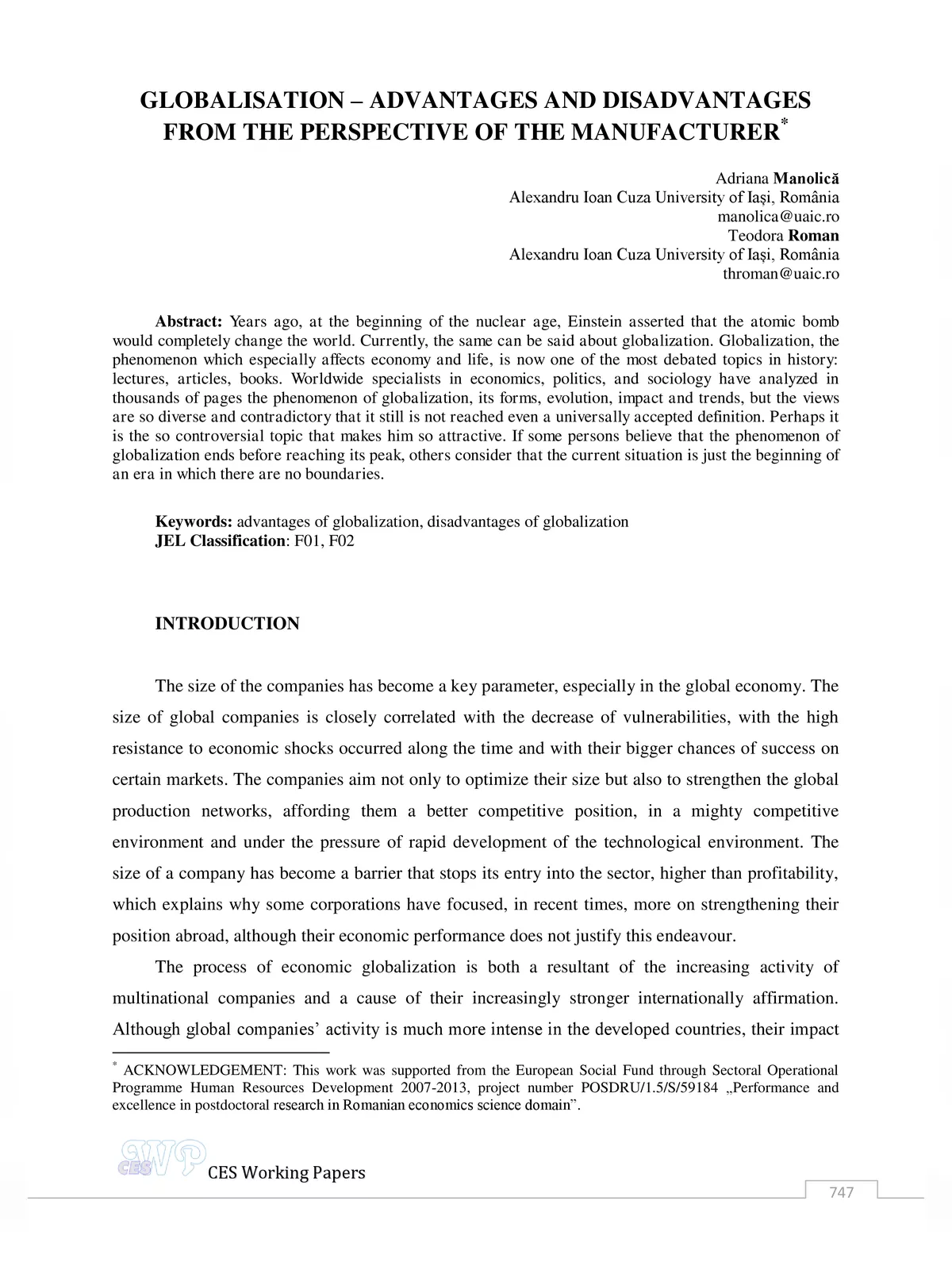Advantages and Disadvantages of Globalization - Summary
Globalization refers to the rapid movement and exchange of people, goods, services, capital, technologies, and cultural practices across the world. One significant outcome of globalization is that it encourages and enhances interactions among different regions and populations globally.
Understanding the globalization of the economy means recognizing how countries interact regarding production, trade, and financial transactions with developed industrial nations.
Key Parameters of Globalization
There are four critical parameters that define globalization:
- (a) Allowing the free flow of goods by reducing or eliminating trade barriers between countries.
- (b) Creating an environment that facilitates the flow of capital across borders.
- (c) Enabling the transfer of technology freely.
- (d) Establishing conditions for the unrestricted movement of labor between nations.
Together, these components transform the world into a global village, and all four are essential for ensuring a smooth path towards globalization.
Advantages of Globalization
Here are some key advantages of globalization for a developing country like India:
- Globalization boosts the long-term average growth rate of the economy through:
- Improved allocation of resources.
- Increased labor productivity.
- Reduced capital-output ratio.
- It helps eliminate inefficiencies in the production system. A long period of protectionism can lead to carelessness in cost-effectiveness, which globalization seeks to address.
- The introduction of foreign capital and updated technology improves production quality.
- Globalization often restructures production and trade patterns to favor labor-intensive goods and techniques, as well as expanding trade in services.
- In a global landscape, domestic industries become more focused on reducing prices and improving product quality to compete with foreign counterparts.
- Globalization discourages unproductive import substitution, favoring cheaper imports of capital goods, thereby lowering the capital-output ratio in manufacturing. This can improve farming terms of trade as well.
- Consumer goods industries can expand quicker to meet growing demands, leading to more job opportunities and ultimately reducing poverty levels.
- It enhances the efficiency of sectors like banking, insurance, and finance by allowing foreign capital and companies to enter these markets.
Disadvantages of Globalization
However, globalization also has its challenges:
- It can lead to a shift of economic power globally, where richer nations dominate poorer nations.
- Globalization may cause imports to increase more than exports, which can create trade deficits and balance of payments issues.
- While it promises job creation and higher wages through technological advancements, in reality, some developing countries have seen more job losses than gains.
- Small-scale and village industries face threats from competition with well-established multinational corporations (MNCs).
- Poverty reduction can slow down in some regions due to increased inequality exacerbated by globalization.
- Agriculture in developing countries might suffer as local markets are flooded with cheaper imported goods, undermining local farmers.
- In many developed democracies, it is becoming increasingly challenging to convince citizens to accept the hardships of globalization with the hope of future benefits.
For more details, feel free to download the comprehensive **Advantages and Disadvantages of Globalization PDF** using the link available below.
